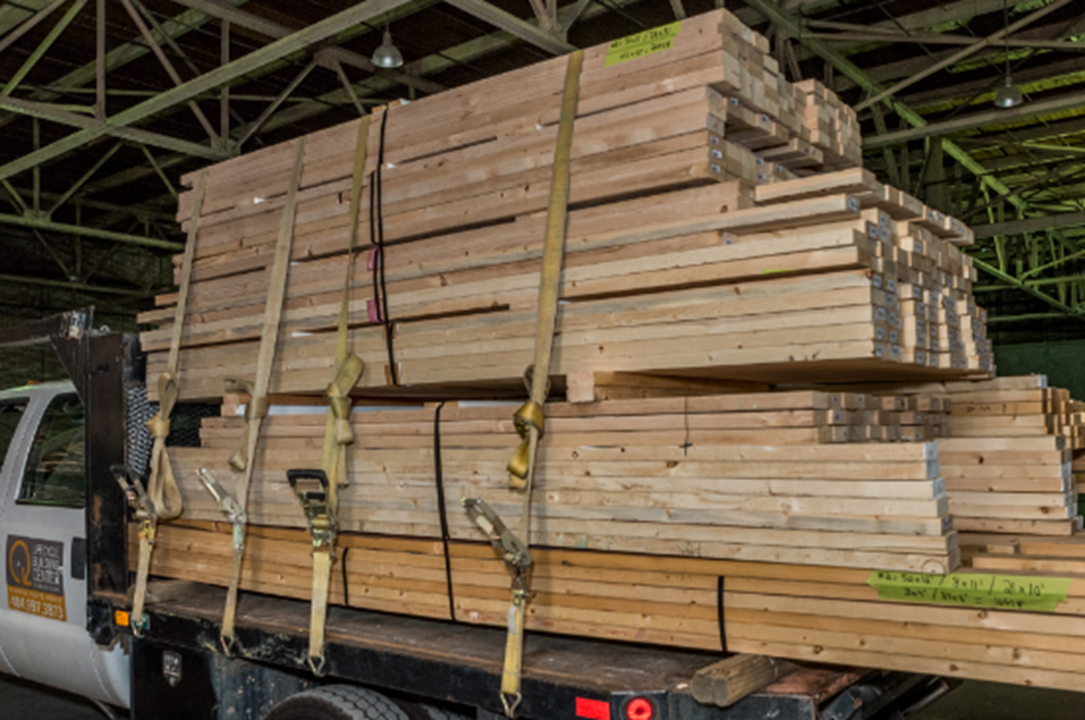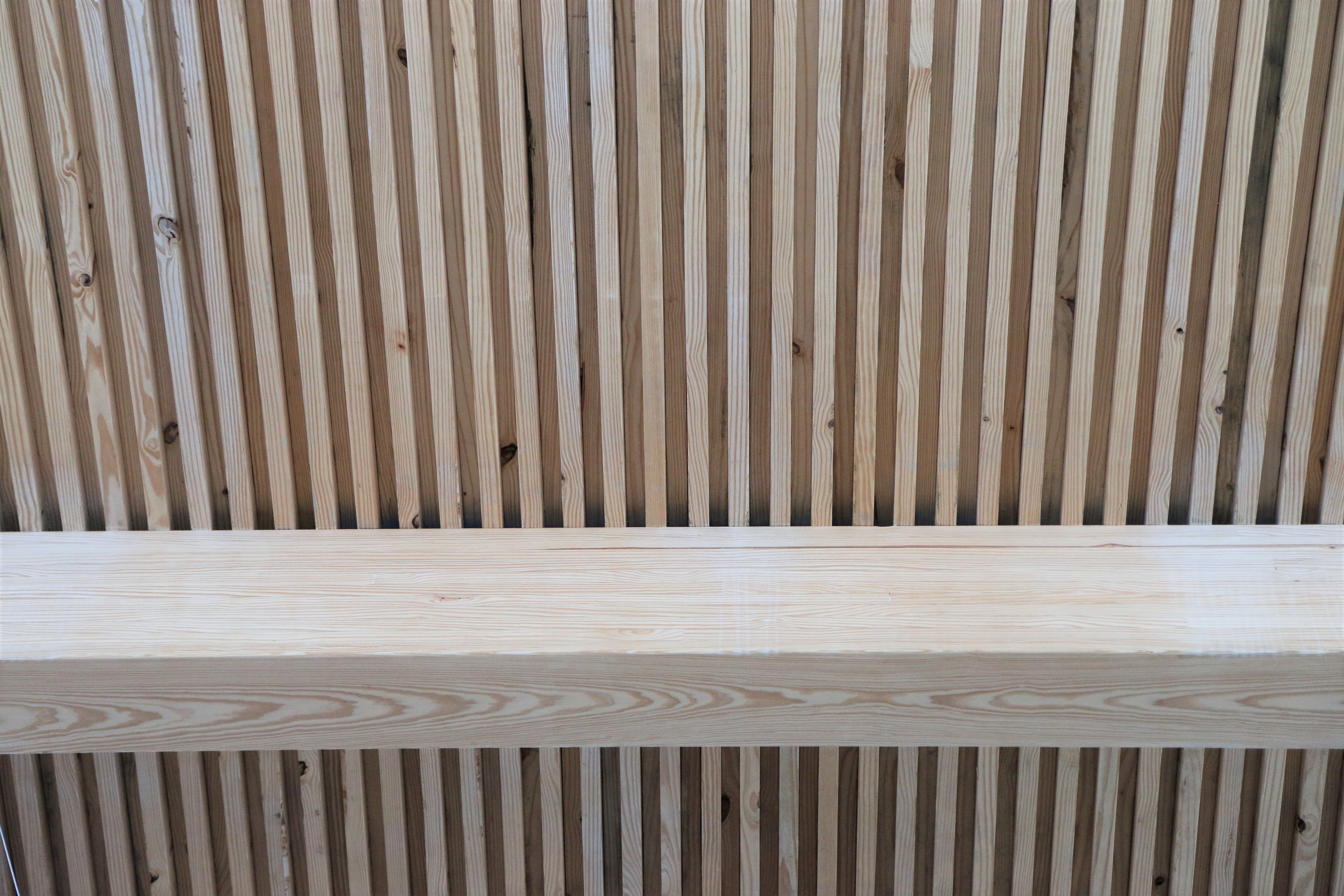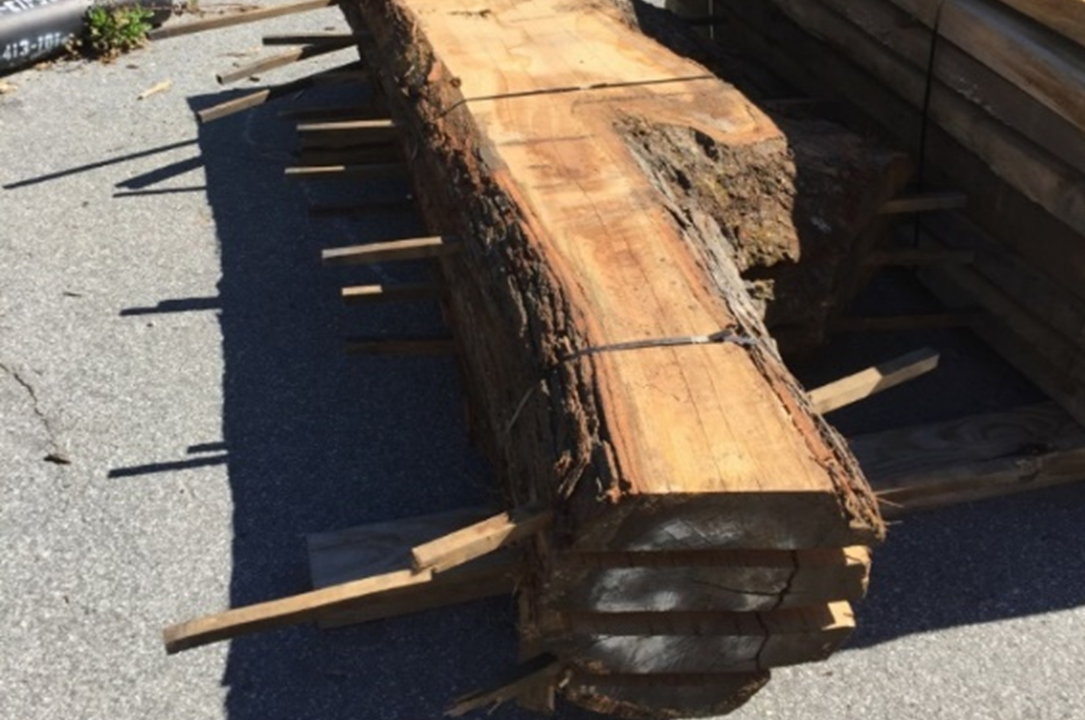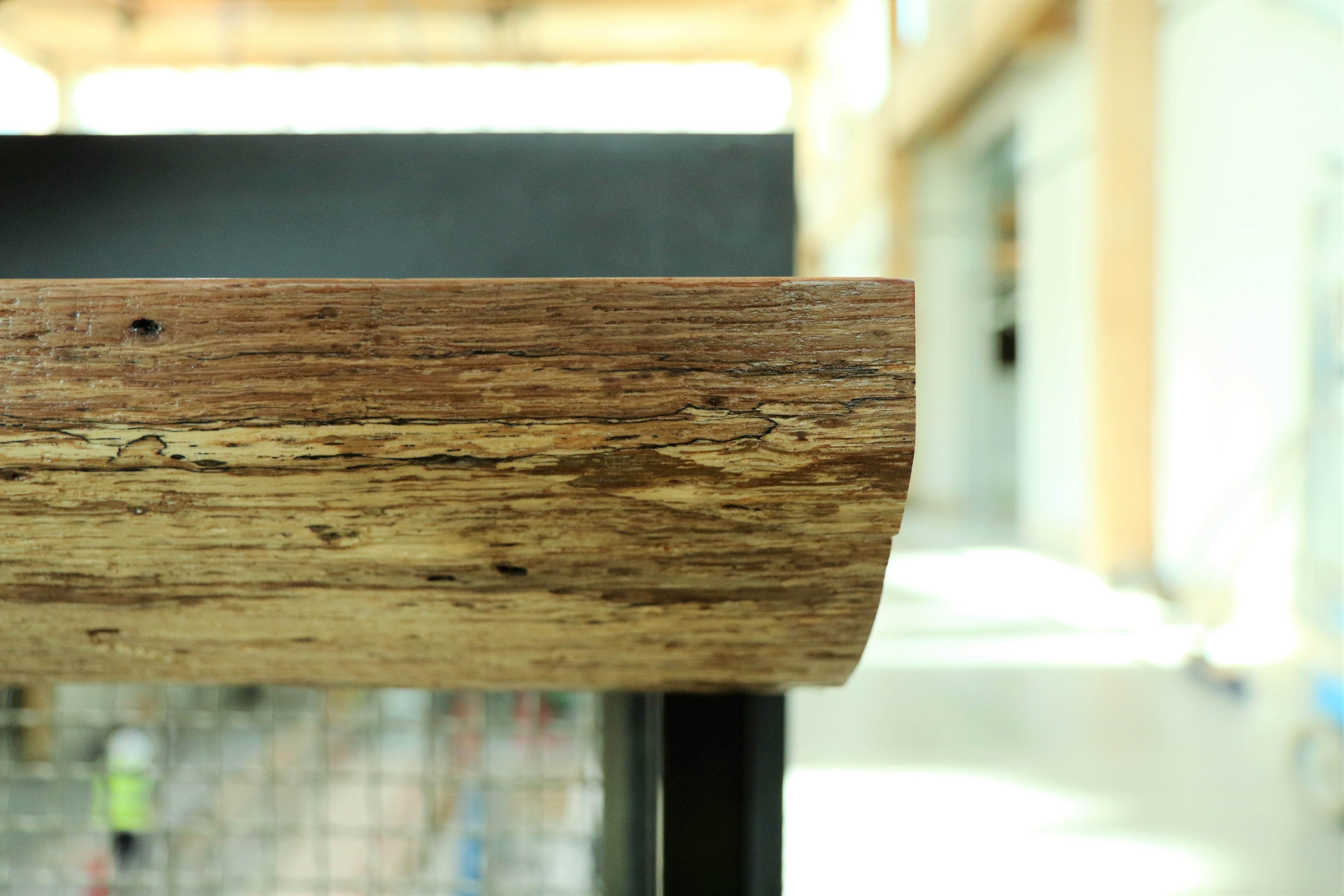Petal: Materials
Imperative 14: Net Positive Waste
Fostering a Salvage Economy
Construction and demolition (C&D) debris consists of materials used in buildings and infrastructure projects (e.g., roads and bridges). According to the EPA, 569 million tons C&D debris were generated in the United States in 2017 (the most current year for which data is available). This is more than twice the amount of waste generated from municipal sources (e.g., trash generated by building occupants).
C&D debris includes materials that could be reused such as steel, wood products, brick and clay tile, and concrete. To divert otherwise reusable C&D material from the landfill, construction of The Kendeda Building had to be net positive waste, meaning more items had to be salvaged than sent to the landfill.
The project reused materials from other buildings and sources on campus. For example, storm-fallen black oak, white oak, and water oak were collected, milled, and dried for “live edge” counters, tables, and benches.
The project team also partnered with the Lifecycle Building Center, an Atlanta-based nonprofit that captures building materials from the waste stream and directs them back into the community through reuse. The Lifecycle Building Center collected C&D debris from the community for use in the building. For example, 25,000 linear feet of 2x4 wood was salvaged from local film sets and incorporated into the nail laminated timber floor/ceiling assembly.
The reuse of C&D debris is an untapped economic development opportunity. Rather than sending these beneficial materials to the landfill, we can use local labor to "virtually mine" the landfills for these raw materials and divert them to construction projects. We could jumpstart such a "salvage economy" if every new building / renovation followed the Living Building Challenge's lead and incorporated at least one salvaged material per 500 square meters of gross building area.
There is a secondary benefit to diverting this material from landfills: reduction in global carbon pollution. First, reuse of material reduces the amount of energy and water required to create new material. This reduction in energy and water use also reduces the amount of greenhouse gases emitted. Second, decomposing wood in landfills releases methane, which is a potent greenhouse gas. Diverting wood from the landfill eliminates this negative impact.



